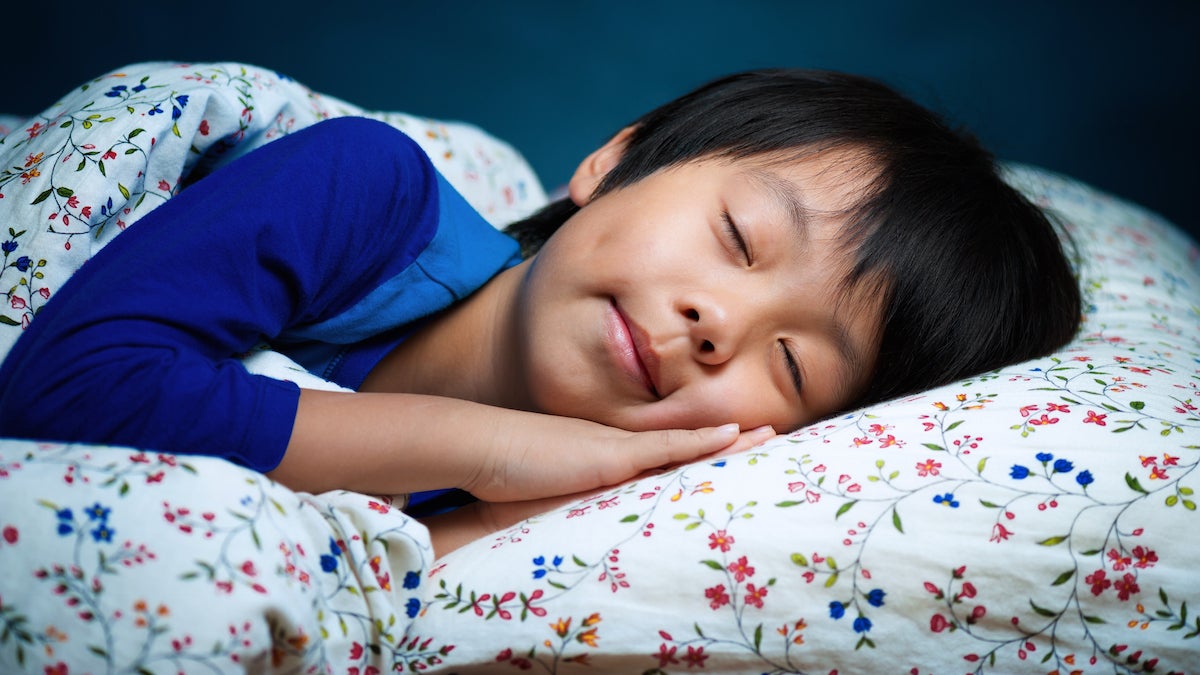9 ways you and your family can get more sleep
 Sleeping child photo via ShutterStock) " title="shutterstock_130841495" width="1" height="1"/>
Sleeping child photo via ShutterStock) " title="shutterstock_130841495" width="1" height="1"/>
(Sleeping child photo via ShutterStock)
Let’s state the obvious: you don’t get enough sleep and neither do your kids, your neighbors, your sister-in-law, her sister-in-law, her neighbors and on and on.
But why are we not getting enough of something that we clearly love and need? There must be a very good reason for this and there is … Netflix.
OK that’s not fair.
It’s more like getting off of Netflix, Xbox, Facebook, YouTube video of cats, or whatever technology we are umbilically connected to. Our children are similarly tied. The problem with our relationship with sleep is nestled cozily in another national problem we have — procrastination.
It is so hard to leave our preferred activity of frittering the time away — a recent poll estimates we spend 1.72 hours a day on social media — that it’s causing us to miss out on hours and hours of sleep each week.
Folks, this is all about re-framing. Instead of thinking about going to bed as pulling the plug on the party or the laptop, we need to think about how good sleep will feel. Let’s reconnect the dots on this. Do we complain about the programs we didn’t watch on TV? No, we complain about how tired we are.
So we could keep feeling bad about not going to bed on time, and getting frustrated at our kids for not going to bed on time or, we can unplug. It’s hard. Admit that this is hard. Share the research. Think out loud with your child about the problems with trying to get more sleep, but the benefits too. Talk about your small steps you’re going to take. See if they will sign on with you. Be a sleep buddy. Here are many ways to help you start a gentle transition routine into bedtime:
Set a target bedtime Kids need to have a set bedtime, otherwise they figure out tons of way to bargain for more time: I’m hungry, I want to cuddle, I need a glass of water. Also your child’s body clock will set with a routine and will anticipate sleep on cue. For adults, an exact bedtime may create too narrow a bull’s eye and too much room for failure, so it’s OK to have a range — but not too wide— choose a half hour window that would be ideal for you.
Make sleep inviting For kids, this means snuggling and being read to, or reading themselves. For adults, it might mean the same thing, or not, but the point is, don’t think about saying no to television, think about saying yes to sleep and anticipating how good you’ll feel.
Institute a last call How can we go to sleep now? We’re hungry! For kids, make a half-hour bedtime announcement. After that, the kitchen closes. The same should go for adults. Identify your procrastination ploys (one more snack, checking email one more time) and schedule those out so it doesn’t throw you off track.
Do your turn down early Rather than working (or checking the news or Facebook) up to the last minute and then insisting that your body do an about face and relax on demand, do what fancy hotels do. An hour or so before bed, dim the lights in the house, turn down the volume on devices (or, just turn off the devices), wash your face and change into your pajamas so that your body gets the message that it’s off duty.
Establish a routine Decide on your wind down activities and repeat nightly — a warm bath, a cup of tea, a book.
Take note of what you are doing instead of going to bed — watching TV, playing video games, answering email, paying bills, whatever it may be, find another time slot that is better suited to that activity and stick with that schedule.
Set up your landing pad We encourage kids to set up their backpacks and permission slips the night before — this is so their launch in the morning goes more smoothly. Grownups plug in their phones and set up their coffee in advance. Let’s use that good logic in reverse. Have your child change into pajamas and wash up before their last activity at night so as they naturally get sleepier, they can pop into bed. Good enough for kids, good enough for you. Do your nighttime routine before you settle in with a show, or better yet a book. Allow yourself to drift off.
Keep out blue rays If you or your kids have to be on their computers or phones in the evening, consider downloading a free app that filters out the blue light on screens that is known to interfere with our natural sleep production.
Don’t entertain your anxious thoughts Anxiety will try to sell its usual doom and gloom pitch, but you don’t have to buy it. Instead make this your mantra: “My body knows how to sleep, sleep will come when I’m ready, I’ll get more sleep than I think. The less I worry, the sooner I’ll fall sleep.”
It takes three weeks to establish a habit and self-monitoring helps. Don’t track your hours of sleep because we can’t necessarily control that, instead, track your good efforts at transitioning: winding down, unplugging, avoiding the traps of bedtime and getting into bed within your target window. Share your progress as a family and celebrate your successes.
OK, lights out. Night night. Off to bed. Sweet dreams.
WHYY is your source for fact-based, in-depth journalism and information. As a nonprofit organization, we rely on financial support from readers like you. Please give today.

